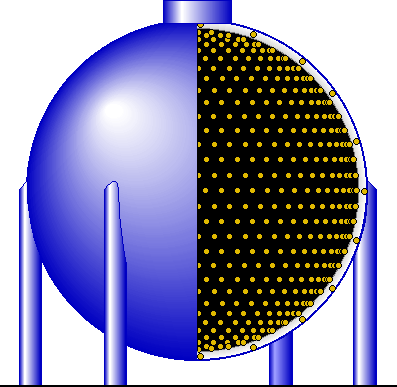
BooNE Collaborators at LSU
Continuing the work
done at LSND, the BooNE detector will conclusively confirm or reject the
numu->nue oscillation interpretation of the signal that LSND observed.
With better systematic checks and increased luminosity, BooNE will be in
a good position to achieve that goal. Furthermore, it will be able
to accurately determine the oscillation parameters, sin²(2 theta)
and delta m² of the oscillations.
BooNE will be
completed in two phases. The first phase, appropriately called Mini-BooNE,
will consist of constructing a beam line off the Booster already at Fermilab.
The beam of 8-GeV protons from the Booster will be focused on an Al target
and the resulting pions will be focused down a 50m beam pipe, in which
they will decay. The first spherical detector will be located
500 m away from the target area and will feature a 500-ton fiducial volume.
It will have a radius of 6.1 m and1220 8-inch PMTs facing inwards.
There will be a 35cm veto region outside the radius of the fiducial volume.
Construction of the first phase will be finished in 2001. The detector
design is shown above.
The second phase
will consist of constructing a second detector in a location that optimizes
the oscillation probability based on the oscillation parameters obtained
from Mini-BooNE. The second detector will drastically reduce the
systematic errors in the oscillation parameters.
The LSU group
is in charge of the calibration
system for the BooNE experiment. There will be 4 laser bulbs
inside the fiducial volume that will allow the regular testing of the PMTs.
There will be a hodoscope above the detector, that will track cosmic
ray muons into the tank. This muon tracker will determine the position
and direction of muons entering the tank. In addition, there will
be six optically isolated 2-inch cubes of scintillator located inside the
tank underneath the muon tracker. These cubes will allow the energy
measurement of stopped muons inside the tank.
